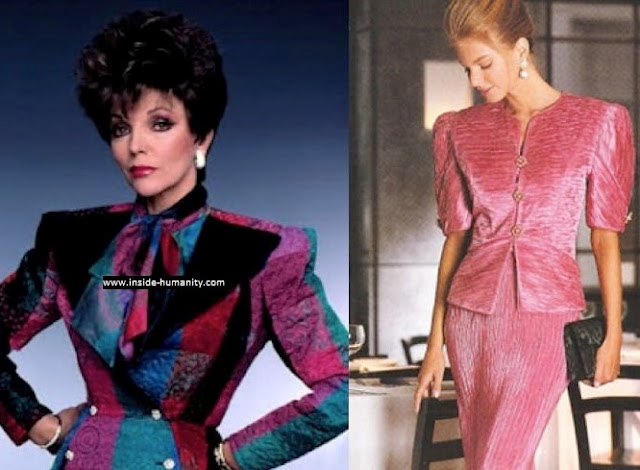Introduction
Fashion is always evolving and changing, and the United States is no exception. American dress trends have gone through many phases throughout the years, each one influenced by cultural, social, and economic factors. In this article, we will take a look at some of the most iconic American dress trends from the 1920s to today. From flapper style to streetwear and athleisure, we will explore the history and evolution of American fashion.
1920s Flapper Style
The 1920s was a decade of social and cultural change, and this was reflected in the fashion of the time. The flapper style, characterized by short dresses, bobbed hair, and excessive jewelry, became popular among young women. This look was a rebellion against the traditional Victorian era clothing and represented the new era of freedom and liberation for women. The flapper style was also heavily influenced by the jazz music of the time and the rise of the speakeasies.
1950s Rockabilly and Pin-up Looks
The 1950s was a decade of prosperity and conformity in the United States. The fashion of the time reflected this, with the rockabilly and pin-up looks becoming popular among young people. Rockabilly was a fusion of rock and roll and hillbilly music, and the fashion reflected this with tight-fitting jeans, leather jackets, and bold prints. The pin-up look, characterized by tight-fitting clothes and bold lipstick, was popularized by actresses like Marilyn Monroe and Bettie Page. These looks were heavily influenced by the post-war era and the rise of consumer culture.
1970s Disco and Bohemian Styles
The 1970s was a decade of social and political change, and this was reflected in the fashion of the time. The disco style, characterized by flashy clothes, bright colors, and platform shoes, became popular among young people. This look was heavily influenced by the disco music of the time and the rise of the disco clubs. The bohemian style, characterized by flowy clothes, earthy colors, and ethnic prints, also became popular among young people. This look was heavily influenced by the counterculture movement and the hippie movement.
1980s Power Dressing and Shoulder Pads
The 1980s was a decade of prosperity and excess in the United States. The fashion of the time reflected this, with the power dressing and shoulder pad looks becoming popular among working women. Power dressing was characterized by sharp suits, bold colors, and shoulder pads, and was designed to give women a more professional and confident look. This look was heavily influenced by the rise of the feminist movement and the increase of women in the workforce.
2000s Low-rise Jeans and Juicy Couture Tracksuits
The 2000s was a decade of technology and consumerism in the United States. The fashion of the time reflected this, with the low-rise jeans and Juicy Couture tracksuits becoming popular among young people. Low-rise jeans were characterized by a low waistline and tight-fitting legs and were popularized by celebrities like Britney Spears and Paris Hilton.2020s Pandemic Fashion:
The 2020s was marked by a global pandemic that had a significant impact on the fashion industry. With stay-at-home orders and remote work becoming the new norm, comfort and practicality became a top priority for many people. Loungewear and athleisure clothing saw a significant increase in demand, as people sought comfortable clothing for their new daily routines. Face masks also became a staple accessory, as personal protective equipment became necessary for public safety. The pandemic also led to a shift towards sustainable and ethically-made clothing, as consumers became more conscious of the environmental impact of fast fashion.
American Plus-Size Fashion
The plus-size fashion industry in the US has grown significantly in recent years, with more and more brands catering to plus-size customers. American plus-size fashion is characterized by its diversity and inclusivity, with brands offering a wide range of clothing options for plus-size individuals. Brands such as Lane Bryant, Ashley Stewart, and Eloquii have become popular among plus-size customers for their stylish and trendy clothing options. The plus-size fashion industry is also becoming more inclusive with an increasing number of plus-size models appearing on the runway and in fashion campaigns.
American Designer Brands 
The United States is home to many well-known and respected designer brands. American designer brands are known for their luxury, quality, and craftsmanship. Brands such as Ralph Lauren, Tommy Hilfiger, and Michael Kors have become synonymous with American fashion, and their clothing is worn by people all over the world. American designer brands also have a strong presence in the global fashion industry, with many designers showing their collections at New York Fashion Week and other international fashion weeks.
American Streetwear Brands
Streetwear is a style of casual clothing that originated in the United States and has since become popular all over the world. Brands such as Supreme, Stussy, and BAPE are synonymous with American streetwear, and their clothing is worn by people all over the world. American streetwear brands are known for their bold designs, graphics and limited edition releases. Streetwear is also a reflection of American culture and society, and it continues to evolve as a fashion trend.
Conclusion
American fashion is a reflection of its culture, society, and economy, and it's constantly evolving. American plus-size fashion, designer brands, and streetwear are all distinct styles, influenced by different factors. From the urban fashion, coastal lifestyle, to the Hollywood red carpet, American fashion is a melting pot of trends and styles. The American fashion industry is also becoming more inclusive, with the rise of plus-size fashion and the increasing diversity in the fashion industry. The future of American fashion will continue to be shaped by these influences and more, making it exciting to see how it will evolve.













0 Comments
Thank you. We'll reply you shortly.